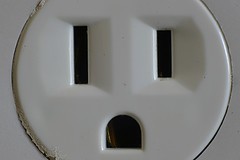Faced with growing momentum to move Washington off of dirty coal power, the owner of the state’s only coal-fired power plant has begun circulating colorful brochures of lush fields and kids blowing pinwheels, aimed at convincing us that our most polluting power source is somehow clean and green.
 But what troubles me is the assertion throughout TransAlta’s literature that the Centralia plant “generates 10 percent of Washington’s power” or “is called upon to meet 10 percent of the state’s energy needs.”
But what troubles me is the assertion throughout TransAlta’s literature that the Centralia plant “generates 10 percent of Washington’s power” or “is called upon to meet 10 percent of the state’s energy needs.”
This seems to suggest that 10 percent of the electricity that local utilities are buying to power our lights and microwaves and hair dryers is purchased from Centralia. That’s highly unlikely to be true, and here’s why:
- Utilities in Washington state are now prohibited by law from entering into longterm power contracts with plants that release as much climate-warming pollution as Centralia does.
- All the coal power bought on the spot market by Washington utilities in 2009 added up to 6.7 percent of the electricity used here*, according to fuel mix disclosure reports, and that would include power from even larger coal plants in the region.
The Centralia coal plant may well generate something close to 10 percent of the electricity physically produced in Washington state. (The latest EIA data says 8 percent, but close enough.) But that hardly means it’s being bought and used by local utilities. Centralia is a “merchant” plant, which means it has no particular customers it’s obligated to serve. It simply sells power to whoever is willing to pay, whether that’s a power marketer or a utility in California or Arizona.
In truth, no one knows where Centralia’s power is going, because the plant’s Canadian owner TransAlta has chosen not to disclose that information. (I contacted the company twice before writing this post in an attempt to to have someone explain the 10 percent figure and find out where Centralia’s power goes, but haven’t received a response.)
